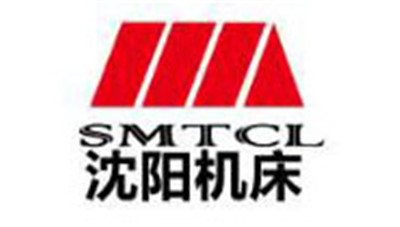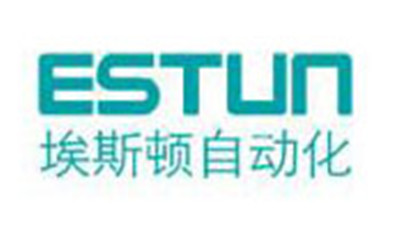How to Optimize Your Power System with Earthing Transformers for Enhanced Safety and Efficiency
Table of Contents
- Understanding the Role of Earthing Transformers in Power Systems
- Key Benefits of Implementing Earthing Transformers for Safety
- Choosing the Right Type of Earthing Transformer for Your Needs
- Best Practices for Installing Earthing Transformers Effectively
- Monitoring and Maintaining Earthing Transformers for Optimal Performance
- Exploring the Benefits and Applications of Common Mode Choke Ring Transformer Inductors and Toroidal Coils
- FAQS
- Conclusion
- Related Posts
In today's rapidly evolving energy landscape, ensuring the safety and efficiency of power systems is more crucial than ever. One key component in achieving this is the implementation of an Earthing Transformer, which not only provides a reliable grounding mechanism but also enhances system stability during fault conditions. According to the IEEE Standards for grounding practices, a properly designed earthing system can reduce equipment damage by up to 40% during electrical faults. Dezhou Xinping Electronics Co., Ltd., a national high-tech enterprise specializing in the manufacturing of precision electronic transformers since its inception in March 2001, is dedicated to advancing these critical technologies. By optimizing power systems with advanced Earthing Transformers, organizations can significantly mitigate risks and improve operational performance, contributing to overall safety and efficiency in electrical installations.

Understanding the Role of Earthing Transformers in Power Systems
Earthing transformers play a crucial role in modern power systems, providing a pathway for fault currents and helping to maintain system stability. By ensuring that grounding is properly implemented, earthing transformers help to protect equipment from voltage spikes and reduce the risk of electrical hazards.
According to a report from the International Council on Large Electric Systems (CIGRÉ), improper earthing practices can lead to equipment damage costing utilities up to 20% of their operating budgets annually. Therefore, understanding the function and optimization of earthing transformers is essential for both safety and efficiency in power delivery.

Incorporating advanced materials and design innovations can further enhance the performance of earthing transformers. A study by IEEE shows that utilizing high-resistance grounding methods can reduce ground fault currents significantly, thereby minimizing the risk of system disruptions. This approach not only improves the safety of electrical systems but also enhances overall operational efficiency, underscoring the importance of investing in quality earthing transformer solutions.
Key Benefits of Implementing Earthing Transformers for Safety
Earthing transformers play a vital role in enhancing the safety and efficiency of power systems by providing a reliable path for fault currents and stabilizing the voltage during unbalanced load conditions. One key benefit of implementing earthing transformers is their ability to minimize potential hazards associated with electrical faults. By effectively grounding the system, these transformers reduce the risk of electrical shocks and fires, contributing to a safer work environment for personnel and equipment.
Tips for optimizing your power system with earthing transformers include regularly inspecting and maintaining your grounding connections to ensure they remain effective and safe. Additionally, consider conducting regular training for your staff on the importance of earthing systems, including how to respond to faults or irregularities in the power supply. This proactive approach not only enhances safety but also improves the overall efficiency of your power system by preventing downtime and costly damages.
In railway systems, for example, ensuring that signaling equipment is adequately grounded is crucial for safe operation. Proper earthing enhances the reliability of communication systems and controls, which is vital for operational safety. Implementing earthing transformers in such critical applications can significantly reduce the likelihood of power disturbances, thereby supporting seamless operations and enhancing safety across the board.
Impact of Earthing Transformers on System Reliability and Safety
This chart illustrates the benefits of implementing earthing transformers by comparing system reliability against various efficiency metrics. The data indicates significant improvements in safety and reliability when earthing transformers are utilized.
Choosing the Right Type of Earthing Transformer for Your Needs
When selecting an earthing transformer for your power system, it's essential to match the specific requirements of your installation. Consider the type of earthing system—whether it’s solidly earthed, impedance earthed, or ungrounded—as each type offers distinct advantages in terms of safety and efficiency. An effective earthing transformer should facilitate the protection of your electrical equipment and enhance the reliability of your power supply.
In addition to determining the right type, evaluating the transformer's voltage and power ratings is crucial. Look for models that can handle your system’s load requirements, ensuring they can effectively manage fault currents while minimizing potential hazards. Moreover, consider additional features such as built-in surge protection and ease of maintenance, which can significantly contribute to the longevity of your power system. By thoroughly understanding your needs and weighing different options, you can make an informed decision on the ideal earthing transformer for enhancing the safety and efficiency of your electrical installations.
How to Optimize Your Power System with Earthing Transformers for Enhanced Safety and Efficiency
| Type of Earthing Transformer | Purpose | Advantages | Installation Considerations | Maintenance Requirements |
|---|---|---|---|---|
| Delta-Wye Transformer | Grounding of electrical installations | Improved safety; reduced equipment damage | Requires appropriate phase connection and load balancing | Regular inspection of grounding connections |
| Wye-Wye Transformer | Neutral grounding for reliability | Minimized phase current; reliable operation | Ensure proper neutral connection | Annual checks of insulation and grounding |
| Zig-Zag Transformer | Provide effective grounding for unbalanced loads | Reduces zero-sequence currents; stabilizes voltage | Consider space requirements and alignment | Routine inspections and cleaning of the unit |
| Auto-Transformer | Voltage regulation and grounding | Space-saving; cost-effective solution | Needs careful adjustment of turns ratio | Regular measurement and performance evaluation |
Best Practices for Installing Earthing Transformers Effectively
When it comes to ensuring safety and efficiency in power systems, the installation of earthing transformers is crucial. According to the IEEE Standard 142, also known as the Green Book, proper earthing significantly reduces the risk of electrical shock and equipment damage. The effective installation of earthing transformers facilitates a solid ground reference, which enhances the system's performance and protects against transient voltages. Best practices such as implementing a suitable grounding grid, maintaining adequate separation from other conductive structures, and ensuring low-resistance connections are vital first steps.
Another key aspect is the selection of the right earthing transformer type. A study by the Electric Power Research Institute (EPRI) indicates that using a Zig-Zag transformer as an earthing solution can help mitigate harmonic distortions and improve system stability. Additionally, for optimal performance, power systems should routinely undergo a grounding resistance test, ensuring that the earthing system meets the industry standard of less than 5 ohms. Ongoing maintenance and monitoring with advanced diagnostic tools can further enhance the lifespan and functionality of the earthing transformer, resulting in a safer and more efficient power system overall.
Monitoring and Maintaining Earthing Transformers for Optimal Performance
Maintaining earthing transformers is crucial for ensuring the safety and efficiency of power systems. According to the IEEE Standard 142, regular monitoring of equipment health can reduce the risk of electrical faults by up to 30%. This is particularly important for earthing transformers, which play a pivotal role in grounding systems by providing a low-resistance path for fault currents, thus preventing voltage surges that can damage equipment and pose safety hazards.

Routine inspections and condition-based maintenance practices, such as thermal imaging and insulation resistance testing, can enhance the performance of earthing transformers. The International Electrotechnical Commission (IEC) recommends implementing a predictive maintenance strategy that utilizes real-time data to monitor transformer performance. By analyzing trends in operational parameters, utilities can anticipate failures before they occur, leading to a significant decrease in downtime and maintenance costs.
This proactive approach not only optimizes system reliability but also contributes to the overall efficiency of the power grid, which can increase by as much as 15% according to a recent report by the Energy Efficiency Directive.
Exploring the Benefits and Applications of Common Mode Choke Ring Transformer Inductors and Toroidal Coils
Common Mode Choke Ring Transformers and Toroidal Coils play a crucial role in various applications by providing significant benefits, particularly in electronic devices where noise reduction and energy efficiency are paramount. These inductors are designed with a focus on small size and high efficiency, allowing them to seamlessly fit into compact designs while ensuring stable performance. Their unique features, such as low temperature rise, indicate their reliability and effectiveness in managing the heat generated during operation, further enhancing their usability in demanding environments.
One of the most appealing aspects of these inductors is their customization capability. Manufacturers often offer OEM services and tailored solutions that align with users’ specific design requirements. This flexibility not only ensures that clients receive products that meet their exact needs but also optimizes performance by utilizing less raw material, contributing to a lower overall cost for users. The experience and expertise in producing high current inductors guarantee that customers can achieve the best solutions for their applications, making Common Mode Choke Ring Transformers and Toroidal Coils essential components in modern electronic systems.
FAQS
: Earthing transformers provide a reliable path for fault currents and stabilize voltage during unbalanced load conditions, enhancing safety and efficiency in power systems.
By grounding the system effectively, earthing transformers minimize the risk of electrical shocks and fires, contributing to a safer work environment for personnel and equipment.
Regularly inspect and maintain grounding connections, and conduct training for staff on the importance of earthing systems and responses to faults.
Adequate grounding of signaling equipment in railway systems enhances the reliability of communication systems and controls, which is vital for operational safety.
Consider the type of earthing system (solidly earthed, impedance earthed, or ungrounded), voltage and power ratings, and additional features such as surge protection and maintenance ease.
Regular monitoring and maintenance can significantly reduce the risk of electrical faults and enhance the performance of earthing transformers, thus ensuring safety and efficiency.
Routine inspections, thermal imaging, and insulation resistance testing are recommended to enhance performance, alongside a predictive maintenance strategy that utilizes real-time data.
Proactive maintenance can lead to a significant decrease in downtime and maintenance costs, while also optimizing system reliability and potentially increasing the overall efficiency of the power grid.
Implementing earthing transformers can significantly reduce the likelihood of power disturbances, thereby supporting seamless operations and enhancing safety in critical applications.
The IEEE Standard 142 suggests that regular monitoring of earthing transformers can reduce the risk of electrical faults by up to 30%, highlighting the importance of maintenance for safety.
Conclusion
In the realm of power systems, the earthing transformer plays a crucial role in enhancing both safety and efficiency. By providing a stable grounding point, these transformers mitigate the risks associated with electrical faults, ensuring that the power system operates smoothly. Key benefits of implementing earthing transformers include improved fault detection, reduction of power outages, and the prevention of equipment damage, thus safeguarding both infrastructure and personnel.
When selecting the right type of earthing transformer for specific needs, it is vital to consider factors such as system voltage and fault levels. Furthermore, best practices for installation and ongoing maintenance are essential to guarantee optimal performance. Regular monitoring of earthing transformers can help identify potential issues before they escalate, ensuring that power systems remain safe and efficient. At Dezhou Xinping Electronics Co., Ltd., we specialize in the precision manufacturing of such critical components, contributing to the advancement of reliable power systems.
Related Posts
-

How to Choose the Right Constant Voltage Transformer for Your Industrial Application
-

Innovative Solutions for Optimal 33kv Transformer Performance
-

Innovative Solutions for Converting 120v To 12v Transformer Power Needs
-

10 Essential Insights for Sourcing the Best Distribution Transformer Worldwide
-

How to Select the Right Capacitor Voltage Transformer for Your Needs
-

Understanding Problems Associated with Earthing Transformers in Power Systems
Blog Tags:


















